The Alaskan husky has a bushy, curled tail while the Siberian husky has a sickle-shaped tail. Both require regular grooming.
| General Appearance | Alaskan Husky: Variable, as bred for performance Siberian Husky: Bushy, sickle-curved or sometimes straight |
| Functionality | Alaskan Husky: Tail type varies, no standard Siberian Husky: Tail used to protect nose from cold when curled over the face |
| Recognized Standards | Alaskan Husky: No breed standard, mixed lineage Siberian Husky: Standard recognized by major kennel clubs |
| Length of Tail | Alaskan Husky: Not standardized Siberian Husky: Medium length |
| Fur Density | Alaskan Husky: Can vary widely from short to long and dense Siberian Husky: Dense fur on the tail |
| Curl of the Tail | Alaskan Husky: Not fixed; may not curl Siberian Husky: Typically well-furred and carried in a sickle curve |
| Prevalence in Racing | Alaskan Husky: Commonly used in dog sled racing Siberian Husky: Also used, but less dominant in competitive racing |
| Influence of Breeding | Alaskan Husky: Tail may reflect various other breed influences Siberian Husky: Purebred, so tail traits are more consistent |
| Role in Breed Identity | Alaskan Husky: Tail is less significant due to varied appearance Siberian Husky: Tail is a breed characteristic and considered in show standards |
The anatomy of a husky tail is a fascinating aspect of these remarkable canine breeds. When it comes to the Alaskan husky vs Siberian husky tail, there are distinct differences in their anatomical structure that contribute to their unique appearance and characteristics.
Alaskan huskies typically have bushy, heavily furred tails that are carried over their back in a graceful curve. This distinctive feature aids in protecting their tail from harsh weather conditions and provides insulation in cold climates.
On the other hand, Siberian huskies boast tails with a sickle shape, tapering towards the end with a dense fur covering. This shape enables them to efficiently conserve body heat and maintain agility during strenuous activities.
Both breeds have tails that serve essential purposes in their natural habitats, such as balancing during movement and expressing emotions through subtle tail movements. Understanding the intricate anatomy of husky tails is crucial for tail care and maintaining the overall health and well-being of these exceptional canine companions.
Alaskan husky vs siberian husky tail
The Alaskan husky vs Siberian husky tail presents distinct differences in anatomy, reflecting their evolutionary adaptations to their respective environments.
Understanding the anatomical structure of husky tails can help husky owners better care for their pets' overall well-being, including addressing the sometimes messy realities of canine guardianship. For practical tips on maintaining a clean environment after your husky has an accident, explore our comprehensive guide on tidying up after your four-legged friend How to Tackle Runny Dog Poop on Carpets.
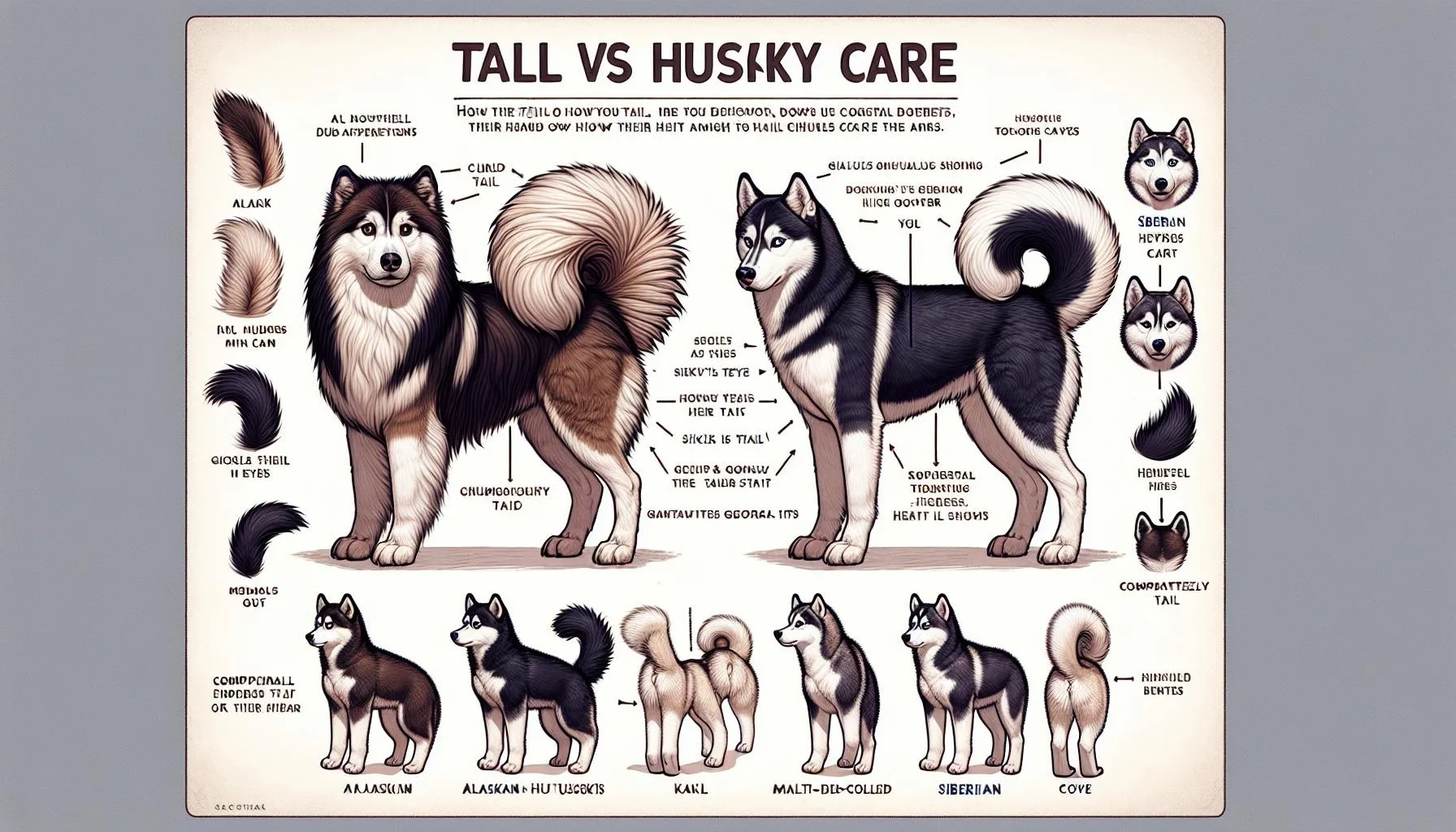
The Alaskan Husky Tail
The Alaskan husky vs Siberian husky tail can be distinguished by the distinct appearance and qualities of the Alaskan husky’s tail. The bushy and curled tail of the Alaskan husky sets it apart from the Siberian husky.
It is characterized by a thick and fluffy appearance, often with a slight upward curl at the end, giving it a distinctive and appealing look. This unique tail is essential for the Alaskan husky, as it helps them maintain warmth and protection in the cold climates they are bred to thrive in.
Alaskan huskies are known for their working and sledding capabilities, and their tail plays a crucial role in regulating body temperature during long, arduous journeys in cold regions.
The dense fur and distinctive curl of the tail provide insulation and shield the husky from inclement weather conditions, ensuring they can perform at their best in their natural environment.
Alaskan husky vs siberian husky tail
The bushy, curled tail also serves as a remarkable trait in the Alaskan husky’s appearance, contributing to its distinct and striking visual appeal. This distinctive feature reflects the breed’s resilience and adaptability, making it well-suited for the demanding tasks it is traditionally bred for in harsh, wintry terrains.
The bushy, curled tail of an Alaskan husky is not just a striking feature, but serves as a warm cover during chilly nights, epitomizing this breed's adaptability to harsh climates. While their physical traits are well-suited to extreme weather, their dietary needs require careful consideration. Learn about suitable treat options for your husky by exploring our article, Discover Safer Treats for Your Dog.
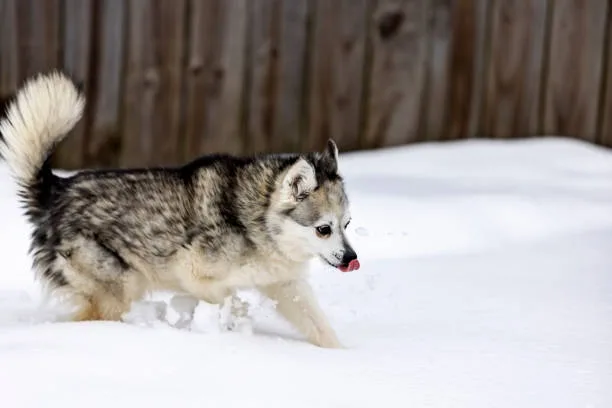
The Siberian Husky Tail
Alaskan husky vs siberian husky tail
The Siberian Husky tail features a distinctive sickle shape, characterized by a graceful curve that is carried over the back in a proud and confident manner. Siberian Huskies have a well-furred tail with a plume of fur that fans out, giving it an elegant appearance.
The tail is of medium length and is set neither too high nor too low on the body, contributing to the breed’s balanced and agile appearance. Alaskan husky vs siberian husky tail The tail’s impressive shape and fur density were developed through natural selection, as it provided the breed with protection against the harsh Arctic elements.
The thick coat of fur on the tail serves as insulation, helping to regulate the dog’s body temperature in cold environments and shielding it from frostbite. This iconic tail is a hallmark of the Siberian Husky’s breed standard, reflecting its endurance and adaptability in cold climates.
Overall, the Siberian Husky’s tail is a striking and integral part of the breed’s physical and functional attributes. It serves as a testament to the husky’s prowess in navigating challenging environments and enduring long distances, making it a distinctive and valuable trait of this remarkable breed..
To delve deeper into the unique traits of Siberian huskies, explore the genetics and science behind their captivating eye color variations, often seen in these majestic dogs. Visit "The Mysteries Behind Huskies' Heterochromia" for an in-depth look at this fascinating phenomenon.
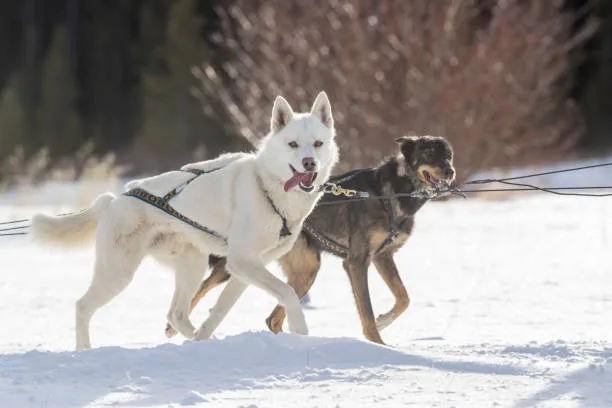
Tail Health Indicators
The condition of a husky’s tail can serve as a valuable indicator of their overall health. Both the Alaskan husky and the Siberian husky are known for their distinct tail characteristics, and understanding what to look for can provide important insights into their well-being.
A healthy tail should be bushy, with a thick and glossy coat. Any signs of dryness, flakiness, or excessive shedding could indicate an underlying health issue.
Additionally, the position and movement of the tail can convey a husky’s emotional state and comfort level. A raised tail signifies alertness and confidence, while a tucked tail may indicate anxiety or discomfort.
It’s essential for husky owners to regularly examine their pet’s tail for any unusual changes and consult a veterinarian if they notice any concerning symptoms.
Some health issues that may manifest in a husky’s tail include skin infections, parasites, or allergies, which can lead to irritation and hair loss. Furthermore, changes in tail posture, such as a constant downward position or excessive wagging, could be indicative of pain or discomfort.
A thorough understanding of a husky’s normal tail characteristics is crucial for recognizing deviations that may signal an underlying health issue. Proper nutrition, regular grooming, and adequate exercise all play a role in maintaining a husky’s tail health.
By being attuned to their husky’s tail indicators, owners can take proactive measures to ensure their beloved pet remains in optimal health.
To delve deeper into the fascinating world of huskies and explore breeds with similar traits and characteristics, consider reading our detailed guide. Uncover a wealth of knowledge by visiting Discover Similar Breeds to Huskies.
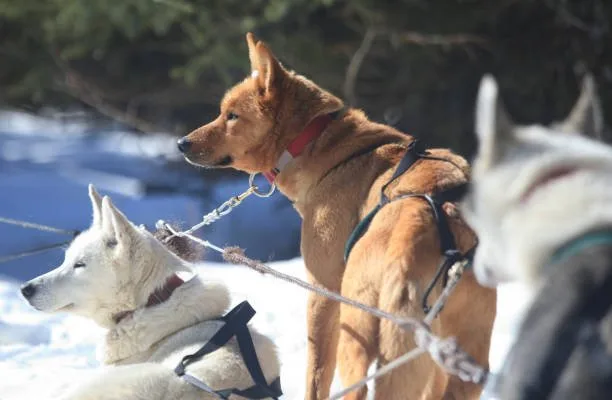
Grooming Needs for Husky Tails
Huskies, whether Alaskan or Siberian, have dense double coats that require regular grooming to maintain a healthy tail. Both Alaskan husky and Siberian husky tails are known for their bushy and fluffy appearance, and grooming plays a crucial role in keeping them clean and free from tangles.
Regular brushing with a slicker brush can help remove loose fur, prevent matting, and reduce shedding. Additionally, using a wide-toothed comb can help detangle the dense fur around the tail, especially in the case of the Alaskan husky with its thicker coat.
Regular grooming also involves inspecting the tail for any signs of irritation, redness, or injury. This is particularly important for the thick-coated Alaskan husky, as their fur can sometimes conceal skin issues.
Moreover, maintaining good hygiene by routinely cleaning the tail area with a damp cloth can help prevent the accumulation of dirt and debris, ensuring the overall health of the husky’s tail. Furthermore, proper grooming extends to nail care, as huskies are active dogs and their nails can grow quickly. Ensuring the nails are trimmed to a suitable length is crucial in preventing any discomfort or issues that may arise from overgrown nails.
It’s important to acclimatize both Alaskan and Siberian huskies to the grooming process from a young age, making it a positive and routine experience for them. In essence, grooming plays an essential role in maintaining the health and appearance of Alaskan husky vs siberian husky tail. By incorporating regular brushing, inspection, and hygiene practices, husky owners can ensure their furry companions’ tails remain clean, healthy, and free from discomfort..
Maintaining the lush tail of your Husky is just the beginning of overall care. Dive deeper into their wellbeing by discovering the optimal nutrition for a thriving Husky puppy on our detailed guide, "Discover the Right Diet for Your Husky Puppy."
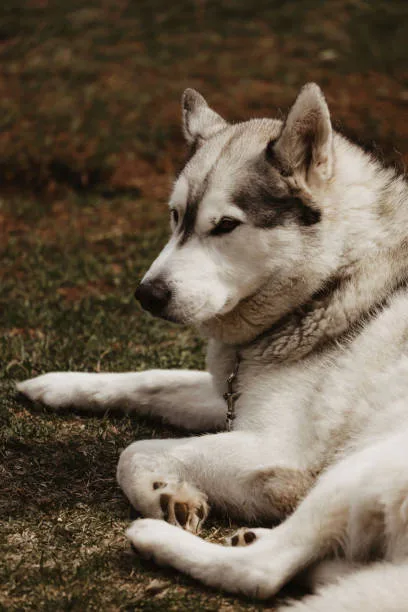
Bathing Tips for Husky Tails
American Kennel Club: Alaskan husky vs siberian husky tail
Huskies are known for their thick double coats and unique tails, and proper bathing is essential for maintaining their hygiene. When it comes to bathing Alaskan husky vs siberian husky tail, it’s important to use a gentle dog shampoo specifically formulated for their coat type.
Start by brushing the tail to remove any loose fur or debris, and then wet the tail with lukewarm water. Apply the shampoo, lathering gently to avoid matting the fur.
Rinse thoroughly, ensuring no shampoo residue is left behind. For drying, gently squeeze out excess water from the tail, then use a clean towel to pat it dry. Avoid vigorous rubbing as it can cause tangles or damage to the tail fur.
Additionally, make sure the tail is completely dry to prevent any moisture-related skin issues. It’s crucial to keep the tail clean and dry, as moisture trapped in the thick fur can lead to skin irritation or even infections. Regular bathing is not recommended for huskies, as it can strip natural oils from their coat and cause dryness.
Instead, focus on spot-cleaning the tail as needed, using a damp cloth to wipe away dirt or mud. Pay attention to the tail’s condition and seek veterinary advice if you notice any skin issues or unusual odor, as this could indicate underlying health concerns.
By following these bathing tips for husky tails, you can ensure their tails remain clean and healthy, contributing to their overall well-being..
Maintaining the health and cleanliness of your Huskies' tails is just one aspect of their overall care. For a deeper understanding of their dietary needs in their natural habitats, explore our in-depth article on the feeding habits of these majestic canines: Explore Husky Dietary Habits in the Wild.
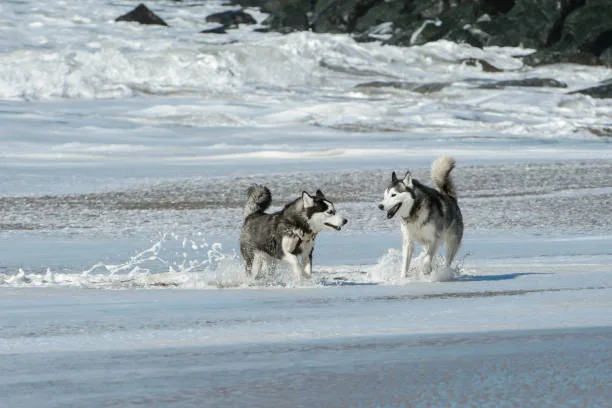
Preventing Tail Injuries
Huskies, especially Alaskan huskies vs Siberian huskies tails, are susceptible to tail injuries due to their active and energetic nature. Common tail injuries in huskies include abrasions, lacerations, and fractures, often caused by collisions or getting caught in objects.
To prevent tail injuries, it’s crucial to create a safe environment for your husky.
This involves removing any hazardous objects that could cause tail injuries and providing ample space for them to move freely without obstructions. Additionally, regular inspection of the tail for any signs of injury or discomfort is essential.
Proper grooming plays a significant role in preventing tail injuries for both Alaskan huskies and Siberian huskies tails.
Keeping the tail area clean and well-maintained reduces the risk of infections and skin irritations, which can lead to tail injuries if left untreated.
Another important aspect of tail injury prevention is understanding your husky’s behavior and body language. Being attentive to signs of distress or discomfort can help identify potential tail injuries early on, allowing for prompt intervention and treatment.
Regular exercise and enrichment activities are also crucial in preventing tail injuries for huskies.
Engaging your husky in physical and mental stimulation helps reduce boredom and excessive energy, minimizing the likelihood of behaviors that could result in tail injuries.
Reddit Alaskan husky vs siberian husky tail
By taking proactive measures to create a safe environment, maintaining good grooming practices, being attentive to your husky’s well-being, and providing adequate exercise, you can effectively prevent common tail injuries in both Alaskan huskies and Siberian huskies tails.
Guarding against tail injuries in huskies is essential to their wellbeing, but observing changes in their sleeping patterns can be just as critical. Discover more on canine health and the reasons behind increased sleep at "Uncover the Causes of Your Dog's Excessive Sleepiness and Enhance Their Vitality".
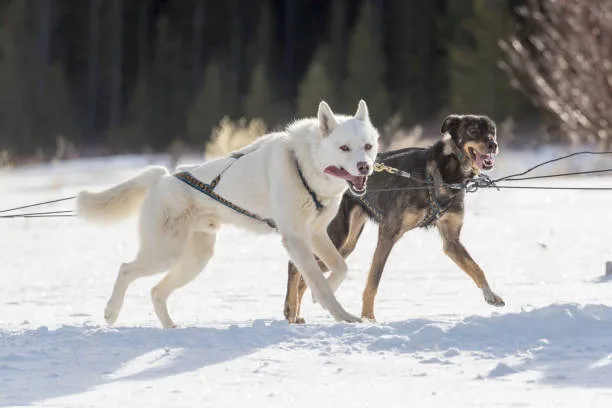
Dealing with Tail Problems
On Quora about: Alaskan husky vs siberian husky tail
Alaskan husky vs siberian husky tail can be prone to various problems, especially in colder climates. Recognizing and addressing these issues is crucial for the overall health and well-being of your husky.
One common problem is frostbite, which can affect the tail due to prolonged exposure to freezing temperatures. Signs of frostbite include discoloration, swelling, and pain.
If you suspect frostbite, gently warm the affected area and seek veterinary care immediately to prevent further damage. Infections can also occur, often due to cuts or scrapes on the tail.
Keep an eye out for redness, swelling, or discharge, and consult a veterinarian for proper treatment. Regular grooming to maintain clean and healthy tails, along with providing shelter and protection from extreme cold, will help prevent these issues. Additionally, ensure your husky’s tail remains dry, especially after exposure to snow or rain, as moisture can contribute to skin problems.
By being vigilant and proactive in managing tail problems, you can ensure your husky stays happy, healthy, and free from discomfort in its tail region..
For those seeking comprehensive guidance on safe pet care treatments, including whether Neosporin is a viable option, delve into our detailed article Understanding the Use of Neosporin on Dogs. Ensure your husky remains healthy and content by staying informed with expert advice.
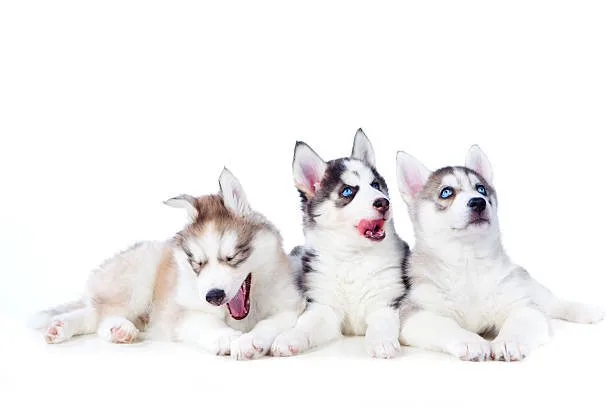
Cold Weather Care for Husky Tails
During cold weather, it’s crucial to pay special attention to the care of Alaskan husky vs Siberian husky tail. Both breeds have thick, bushy tails that help them regulate body temperature, but they can still be susceptible to cold-related issues.
To protect their tails in chilly conditions, it’s essential to ensure they have a warm and dry shelter to retreat to. Additionally, providing them with cozy bedding and possibly a heated dog house can help keep their tails from becoming too cold.
When going outside in the winter, consider outfitting your husky with a specially designed dog jacket or vest that covers their tail to provide extra insulation. This can be particularly beneficial during extended periods of time spent outdoors, such as during winter hikes or outdoor activities.
Keeping their tails dry and clean is also essential to prevent frostbite or other cold-related skin issues, so be sure to thoroughly dry their tails after they’ve been exposed to snow or moisture. Lastly, paying attention to any signs of discomfort or distress in your husky’s tail, such as excessive shivering or discoloration, is crucial to address any cold weather-related problems promptly.
By following these cold weather care tips, you can help ensure that both Alaskan and Siberian huskies stay comfortable and healthy, even in the chilliest of conditions.
Summary:
This paragraph provides essential tips for protecting Alaskan and Siberian husky tails in cold weather. It emphasizes the importance of providing warm shelter, cozy bedding, and insulated dog jackets or vests.
Additionally, it highlights the significance of keeping their tails dry and clean to prevent cold-related skin issues.
To delve deeper into the well-being of your husky, explore our comprehensive guide on managing your dog's evening distress. Discover strategies to comfort your husky during nighttime anxieties by reading Helpful Tips to Ease Their Fear!.
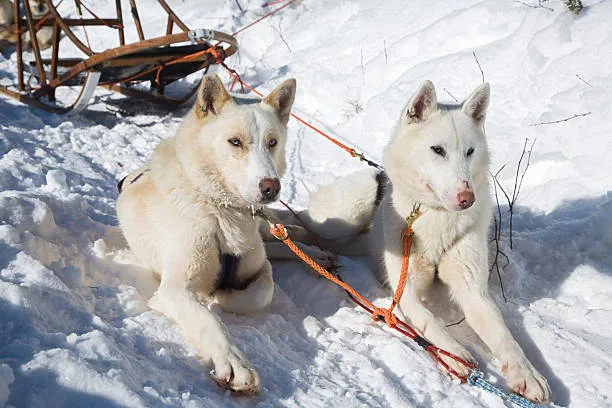
Understanding Tail Behaviors
Huskies communicate a lot through their tails, and understanding their tail behaviors can provide valuable insights into their mood and well-being. The Alaskan husky vs Siberian husky tail comparison showcases distinct tail postures and movements that reveal important cues about their emotions.
A raised tail indicates confidence and alertness, while a tucked tail suggests fear or submission. A relaxed, gently wagging tail signifies a content and friendly disposition, whereas a stiff, upright tail signals agitation or potential aggression.
Paying attention to these tail behaviors allows owners to better connect with their huskies and address their emotional needs effectively.
Interpreting a husky’s tail language also involves considering the speed and direction of their wagging. A broad, vigorous wag often indicates excitement or happiness, whereas a slow, minimal wag may convey uncertainty or caution.
Additionally, a husky may hold their tail high and slightly curved when feeling self-assured, while a low or tucked tail can be a sign of stress or discomfort.
By observing these tail behaviors, owners can gain a deeper understanding of their husky’s emotional state and respond accordingly to ensure their well-being and happiness. This insight empowers owners to provide the necessary support and create a strong, trusting bond with their husky companions.
Understanding your husky's tail language provides great insights into their mood and emotions. For more advice on strengthening your bond with your husky, especially if they seem to favor or avoid certain family members, explore our expert tips on enhancing family-pet relationships with these effective bonding strategies.
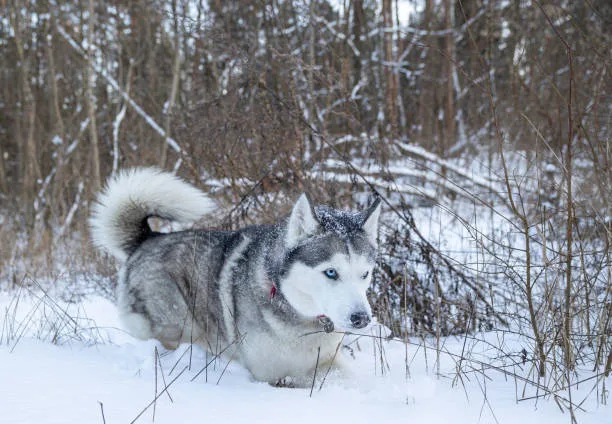
Diet and Tail Health
A balanced diet plays a crucial role in maintaining the overall health and well-being of Alaskan huskies vs Siberian huskies tail. The quality of food directly impacts the condition of their skin, coat, and tails.
Adequate protein, healthy fats, and essential vitamins and minerals are essential for promoting a glossy coat and healthy skin, which in turn contributes to the well-being of the husky’s tail. Nutritious food rich in omega-3 and omega-6 fatty acids helps to support skin health, reducing the risk of dryness and irritation that could affect the tail. Additionally, providing a diet with appropriate levels of antioxidants can help to combat inflammation and potential skin issues that might impact the tail’s condition. Feeding a high-quality, balanced diet that meets the specific nutritional needs of huskies is imperative.
A diet tailored to their unique requirements ensures that their tail and overall health are well-maintained. However, it’s important to consult with a veterinarian to determine the optimal diet for a husky, taking into account factors such as age, activity level, and any specific health concerns. In summary, a well-rounded diet for Alaskan huskies and Siberian huskies is essential for maintaining a healthy tail.
The right combination of nutrients, including proteins, healthy fats, and vitamins, supports skin and coat health, ultimately contributing to the well-being of the husky’s tail. Always seek professional advice to tailor their diet to their individual needs..
To discover more about canine behaviors and what they signal about your pet's health and happiness, delve into our detailed exploration titled The Sleep Habits of German Shepherds. Understanding these patterns is essential to creating a nurturing environment for your furry friend.
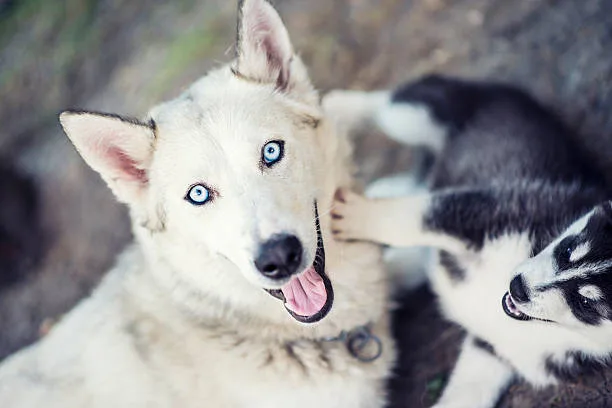
Professional Care for Husky Tails
As a responsible pet owner, it’s essential to be vigilant about the health and condition of your Alaskan husky vs Siberian husky tail. Sometimes, despite your best efforts, your husky’s tail may require professional care.
When you notice any signs of distress, injury, or abnormality in your husky’s tail, it’s crucial to seek the expertise of a professional groomer or veterinarian. These professionals are equipped to handle Alaskan husky vs Siberian husky tail-related issues with precision and care. If your husky’s tail becomes unusually matted or shows signs of persistent shedding that may indicate an underlying health issue, consulting a professional groomer can provide invaluable assistance.
They can assess the specific grooming needs of your husky’s tail and recommend appropriate care routines tailored to the unique characteristics of either an Alaskan or Siberian husky. Furthermore, if you observe any symptoms of tail injuries, such as cuts, bruising, or swelling, it’s imperative to schedule a veterinary examination promptly. Tail injuries can lead to discomfort and complications.
A veterinarian can determine the extent of the injury, provide suitable treatment, and offer guidance on tail care and recovery. It’s especially important to seek professional assistance for tail injuries in active huskies, as they may aggravate the condition by engaging in intense physical activities. In conclusion, seeking professional care for your husky’s tail is vital when faced with grooming challenges or health concerns.
Professionals can offer tailored solutions and expert guidance to ensure your husky’s tail remains healthy and vibrant. Remember, prioritizing your husky’s tail care with professional assistance is a proactive approach to maintaining their overall well-being..
To extend your knowledge on best practices for the care and maintenance of canine companions, delve into the comprehensive guide provided by Britannica's dog encyclopedia. This resource offers valuable insights for any dog owner seeking to ensure their pet's health and happiness.
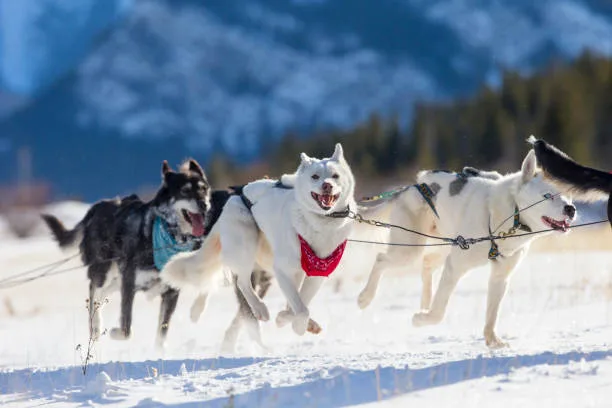
Sled Dog Capabilities and Care
Alaskan husky vs siberian husky tail is just one aspect of the overall capabilities and care required for these remarkable sled dogs. Known for their endurance and stamina, both Alaskan and Siberian huskies have a rich history as working dogs in cold climates.
The distinct characteristics of the Alaskan husky, such as their strong build and endurance, make them well-suited for long-distance running in harsh conditions. On the other hand, Siberian huskies are known for their ability to withstand cold temperatures and pull heavy sleds over long distances.
To maintain their health and energy levels, these sled dogs need special care, including a balanced diet, regular exercise, and monitoring for signs of fatigue or injury.
Both breeds require proper grooming and tail care to ensure they can perform at their best.
Regular checks of husky tails are essential to identify any signs of injury or discomfort, which could affect their ability to pull sleds. While the specific sled-pulling abilities and endurance may differ slightly between the Alaskan and Siberian huskies, both require similar levels of care and attention to maintain their health and well-being.
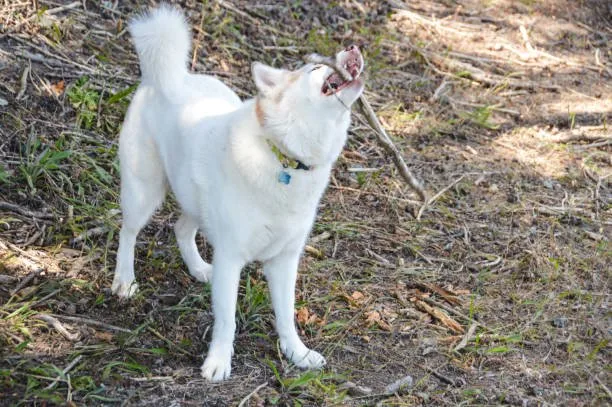
Adaptations and Socialization of Northern Breeds
Northern breeds like the Alaskan husky vs Siberian husky tail have distinct genetic adaptations that make them well-suited for cold climates. These adaptations include unique tail characteristics that help them thrive in snowy environments.
Alaskan huskies typically have bushy, curled tails to provide protection from the cold, while Siberian huskies have sickle-shaped tails that aid in heat dissipation. Their genetic makeup equips them to withstand freezing temperatures and harsh weather conditions, making them excellent cold-weather companions. Socialization is crucial for huskies, given their pack-oriented nature.
It’s essential to understand and address their strong prey drive and pack behavior. For example, the Iditarod race dogs exemplify the cooperative nature of huskies when working together in a pack.
Proper socialization and understanding of their instincts are key to nurturing well-balanced and well-behaved huskies. These genetic and behavioral traits emphasize the significance of structured socialization practices to help huskies integrate into various environments and interact positively with other animals and people. This proactive approach is critical for fostering a harmonious relationship and ensuring the well-being of these remarkable Northern breeds..
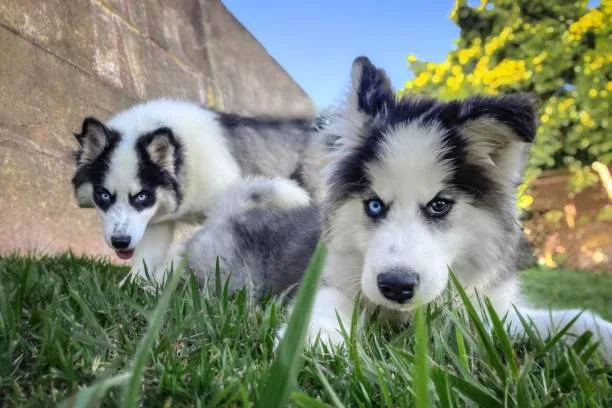
Husky Coat and Tail Maintenance
Maintaining the coat and tail of Alaskan huskies vs Siberian huskies requires specific care to keep them healthy and beautiful. Both breeds have a thick double coat that needs regular maintenance.
Brushing their coat is crucial to prevent matting and reduce shedding. However, when it comes to their tails, there are some differences to consider.
Alaskan huskies typically have bushy, curled tails that require occasional brushing to keep them looking neat and to prevent tangling. On the other hand, Siberian huskies have distinct sickle-shaped tails that need minimal grooming compared to their Alaskan counterparts.
Regular vet check-ups are essential to ensure the overall health and wellbeing of both the tail and the husky, as they can help detect any potential health issues early on. These checks also allow for professional guidance on how to maintain the tail’s health and address any specific concerns arising from individual tail characteristics.
Regular brushing is crucial for both the coat and tail of huskies to prevent matting and reduce shedding.
- Alaskan huskies have bushy, curled tails that need occasional brushing to maintain their neat appearance and prevent tangling.
- Siberian huskies have distinct sickle-shaped tails that require minimal grooming compared to Alaskan huskies.
Vet check-ups are essential to ensure the overall health and wellbeing of both the tail and the husky, helping to detect any potential health issues early on and providing guidance on tail maintenance.
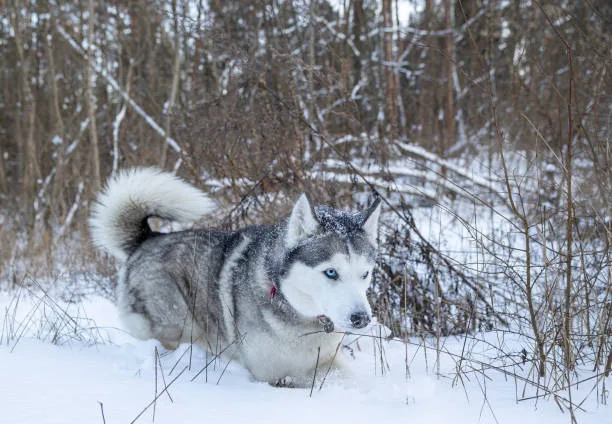
Husky Behavioral Traits and Communication
Huskies are known for their distinctive tail communication, which plays a crucial role in understanding their behavioral traits and facilitating effective training and care. Both the Alaskan husky and Siberian husky exhibit unique tail signals that reflect their mood, emotions, and overall well-being.
The tail positioning of these huskies is a key form of communication, with different positions conveying various messages. Alaskan huskies, known for their working and endurance capabilities, tend to hold their tails in a more relaxed position when at ease or content. On the other hand, Siberian huskies, with their strong pack instincts, may hold their tails in an erect position to display confidence or alertness.
It’s essential for husky owners to familiarize themselves with these distinctive tail signals to better understand and address their husky’s needs. Moreover, huskies possess inherent behavioral traits that can pose challenges during training. Their independent nature and strong prey drive require a nuanced approach to training and care.
Understanding these traits is crucial in developing a strong, trusting relationship with the husky and ensuring their well-being. By recognizing and interpreting husky tail signals and understanding their unique behavioral traits, owners can effectively communicate with their huskies, provide the appropriate care, and build a mutually respectful and fulfilling relationship. This comprehensive understanding of husky behavioral traits and tail communication ultimately contributes to the overall well-being and happiness of these remarkable canine companions..
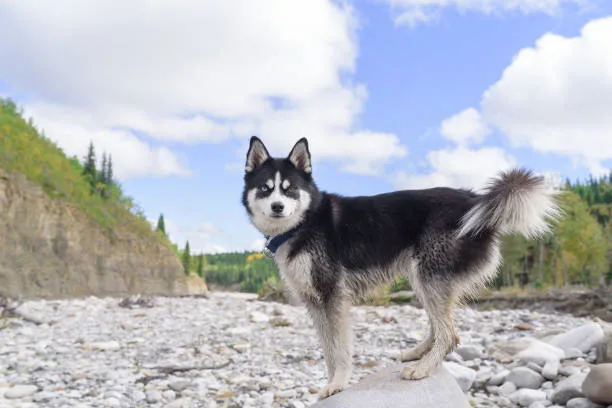
Cold Weather Considerations for Husky Wellness
Huskies are built for cold climates, and as such, they require special care to thrive in harsh winter conditions. The Alaskan husky vs Siberian husky tail debate may pale in comparison to the crucial factors of proper diet and exercise in maintaining their wellness.
A nutrient-rich diet is essential for providing the energy and nutrients needed to keep huskies warm and active in cold weather. Additionally, regular exercise is crucial for their physical and mental well-being, as it helps to stave off boredom and maintain a healthy weight.
To protect huskies from harsh winter conditions, it’s important to provide them with proper shelter, including insulated dog houses or a warm indoor space. When taking huskies out in cold weather, it’s advisable to outfit them with a well-fitted coat or sweater to ensure they stay warm and comfortable.
Additionally, paying attention to the condition of their paws and using pet-safe ice melts can help prevent discomfort and injury. Overall, by focusing on diet, exercise, and protective measures, husky owners can ensure that their furry companions thrive and stay healthy even in the coldest climates.
Proper diet and nutrients are crucial to keep huskies warm and active in cold weather.
Regular exercise is essential for huskies to maintain their physical and mental well-being.
Provide proper shelter, such as insulated dog houses, and outfit huskies with coats or sweaters when going out in cold weather.
Pay attention to the condition of their paws and use pet-safe ice melts to prevent discomfort and injury.
By focusing on diet, exercise, and protective measures, husky owners can ensure their companions thrive and stay healthy in cold climates.
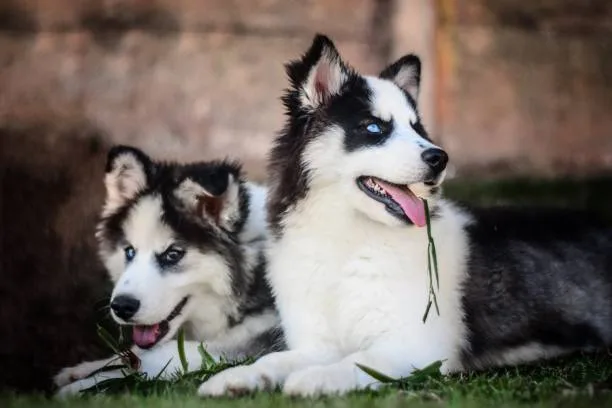
Conclusion: Optimal Care for Husky Tails
Proper care for Alaskan husky vs Siberian husky tail is crucial in ensuring the overall well-being of these remarkable breeds. While both huskies share some tail care characteristics, their distinct needs require specific attention to maintain optimal tail health. First and foremost, regular grooming is essential for both Alaskan and Siberian huskies to keep their tails clean and free from mats.
Brushing the tail fur helps prevent tangles and ensures the circulation of natural oils, promoting a healthy coat and skin. Additionally, inspecting the tail for any signs of injury or discomfort should be integrated into their routine grooming. When it comes to bathing, it’s important to use a gentle, husky-specific shampoo to prevent skin irritation and maintain the natural oils in their double coat.
Paying attention to the tail’s cleanliness during baths is crucial, as moisture trapped in the fur can lead to skin issues, particularly in the case of the dense Alaskan husky tail. Regular vet check-ups are imperative to monitor the condition of the husky tail and overall health. A veterinarian can advise on specific care needs, identify any potential problems early on, and provide tailored advice based on the individual breed and its unique characteristics. Moreover, an appropriate diet plays a significant role in the maintenance of a healthy husky tail.
Opt for high-quality food that supports the husky’s coat and skin health, as well as their overall well-being. Understanding the distinct temperaments and physical needs of Alaskan and Siberian huskies is essential for tail care. Each breed may exhibit differing behaviors and responses to specific care routines, emphasizing the importance of tailored care based on individual traits. In conclusion, Alaskan husky vs Siberian husky tail care requires a conscientious approach to grooming, bathing, vet check-ups, and dietary considerations.
By recognizing their unique needs and incorporating these general care guidelines, husky owners can ensure their furry companions enjoy optimal tail health and overall wellness..
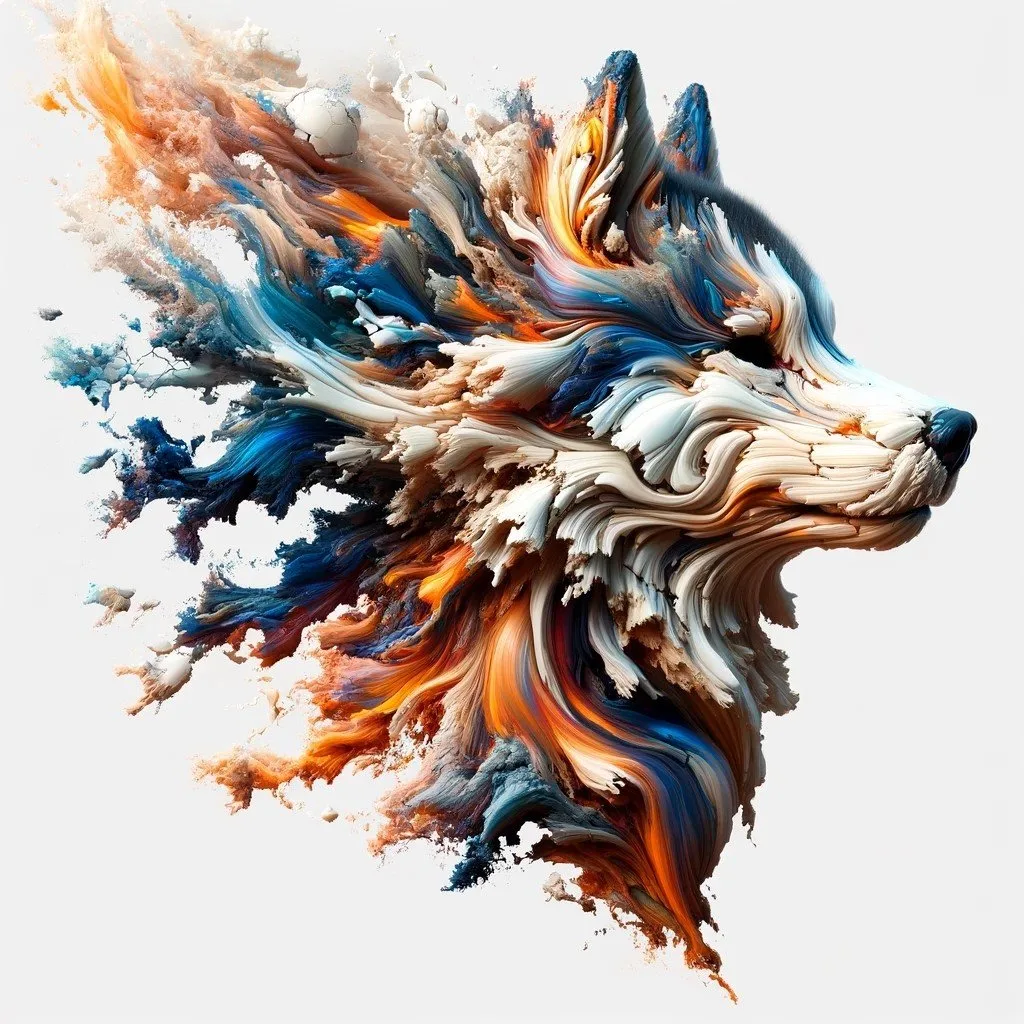
Leave a Reply